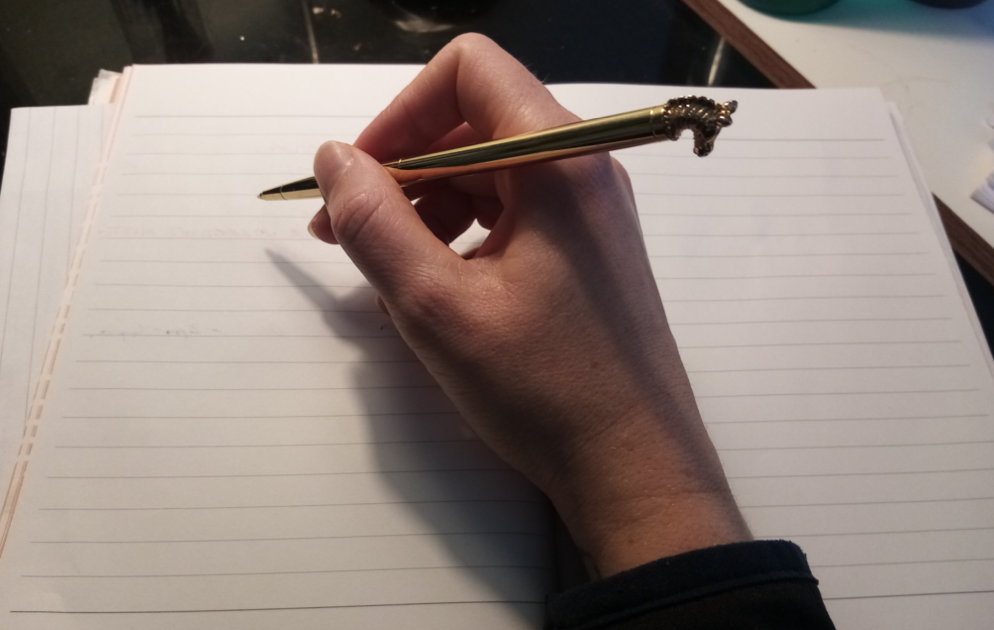Jen Remnant
A key deliverable of the DISC project is a suite of training materials informed by the data we have collected and co-developed with our user led research team. An element of this training is immersive virtual reality which invites attendees to interact with environments that can be disabling for some colleagues. One of the environments is an office and the other is a job interview – a significant feature in most academic careers. The trainee attends the interview as a silent chair, while two colleagues interview a candidate for a post-doctoral researcher post in a physics department. There are three interview scenarios, all of which highlight barriers to adequate disability inclusion. To generate these scenarios, the DISC team had to author interview scripts, a process I reflect on here.

Script writing is an interesting process to the uninitiated. At first, I was confident that as a team we would find it relatively easy to write small sections of job interview script for a science-based job. Across the group we have a combined experience of being interviewed and conducting interviews, and from our data with colleagues and research leaders, examples of ableist comments and recruitment issues in Higher Education Institutions (HEIs). It seemed like a relatively simple task.
First, we had to decide on scenarios. We suddenly realised how many different directions a singular interview might go. With two interviewers, they could both be supportive and well versed in diversity issues, or one of them could be. They might be willing to offer support but uninformed, they might hold problematic views about disability, they might disagree. Similarly, the candidate might disclose that they are disabled and politically engaged with disability activism and understand their employment rights, or they might be apologetic. There is also the realistic option that they might not disclose at all.
Once we decided on the scenarios relating to views and responses to disability, we had to move on to the interview basics. We had already decided that the interview would be for a post-doctoral research associate in Science, Technology, Engineering or Maths (STEM) based disciplines, but had not specified which. Their expertise had to be believable, and for those receiving the training but not in the discipline we opted for, accessible. In the end we plumped for physics(!). Our candidate was going to be a researcher looking at carbon nanofibers, as was the project they were applying to. I used a selection of Physics papers to inform their research area and responses to interview questions, and the CV of a physicist colleague as inspiration for their CV, professional history and publications. We opted for publications in STEM journals that were well known, such as Nature and Science, as well as a collection of more general academic skills relating to public engagement and dissemination.
Then came the process of actually putting words to paper. It turns out, very few of us write how we speak – in unfinished sentences, littered with ‘ums’ and ‘likes’ and pauses. We found that we often write in a formal style – ‘I am well’ rather than ‘fine, cheers’ – that ultimately was not naturalistic. Discipline specific interview responses initially read like journal abstracts in that they were formal, overly technical and not conversational. This took reworking by the whole team, discussing how we speak under pressure, what we actually say and how others present respond.
We also had to remember that a lot of communication is conducted non-verbally, so different team members can read different intonations into various phrases or read a section of script as disjointed or without intended pauses. At this point we had to add directions, including simple responses such as nodding, but also pauses and emotions – where the candidate might stop to think, or where the conversation might become awkward due to something that is said. These directions will be used to aid the actors who play each role in a degree of improvisation, as well as give each other a sense of how we anticipated the dialogue to flow.
Script writing is a surprisingly time-consuming exercise. Each script has taken numerous working days altogether, and is approximately eight sides of A4, and represents less than five minutes of talking time. However, after circulating numerous drafts between us we have come up with something that feels natural, will no doubt be aided by the actors’ talents, and communicates some of the issues faced by disabled staff when being interviewed, and things to consider for those involved in recruitment. The next task is to recruit actors and get it recorded – with another opportunity to update the blogpost then!
